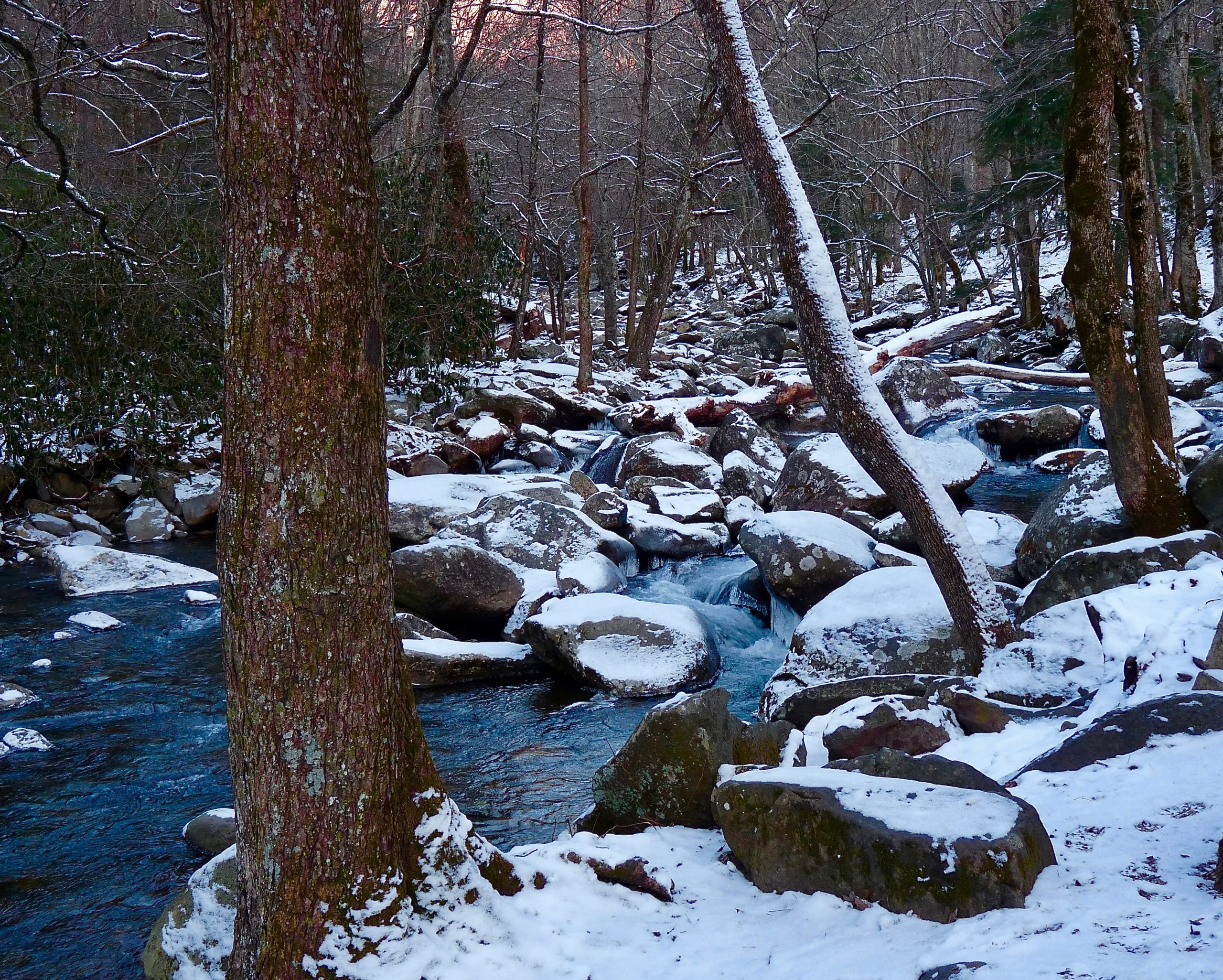
What is it about flowing water that so many of us find so mesmerizing and magnetic?
The sound? The movement? The fall over a precipice to a pool below? The eternal pounding against rocks that become imperceptibly smoother by the moment?
Whatever the attraction, the Smokies—and, by happy extrapolation, Smokies visitors—are blessed with the magic of water: from the merging streams in Greenbrier and the pleasant ripples of the Oconaluftee River to the stunning cascades of Abrams Falls and the crashing roar of the Sinks.
Part of the mystery of the Smokies’ water landscape—over 2,000 miles of streams and rivers—is that it changes often.
A week or more of no or little rain can dramatically impact the flow of popular streams like the Little Pigeon River, Deep Creek, and Little River. The roll of water under a bridge in Greenbrier could be mighty one week and relatively placid the next, with high mountain springs carrying the burden in dry times.

Infrequent visitors to the park who hauled in tubes to ride rollicking waves in May might be surprised to find the same river much calmer and shallower in July, their tubes meeting resistance from river-bottom rocks.
I had a similar experience in the park recently, as several of my favorite streamside spots, where I like to sit and contemplate all manner of important things, were not at all conducive to pondering. Water flow was down considerably, turning normally fun cascades into trickles and the roar of waterfalls into whimpers. I longed for a mid-afternoon shower to feed the flow—and my pondering.
Fortunately, drought is a word not normally associated with the Smokies. The park averages 55 inches of rain annually in the valleys, and some of the high peaks see an average of 85 inches. These numbers contribute to the vast diversity of plant and tree life in the park, sending park waters flowing mostly toward the Tennessee River.
Sometimes there is the opposite of drought. Hurricane Ida slammed portions of the park with a day and a half of rain last summer, sending streams out of their banks and creating waterfalls along trails where previously none existed. Friends climbing the Alum Cave Trail on Mount Le Conte on the storm’s second day—yes, they were dedicated—reported encountering rampaging water on the mountain’s shoulders, making portions of the trail much more difficult to negotiate than on normal trips.
People who visit the Smokies regularly have told me that it rains there only when they have a picnic, hike, or float trip scheduled. I’m tempted to burden them with that oft-heard local weather advice: “If you don’t like the weather in the Smokies, hang around for five minutes. It will change.”
This is sometimes true and sometimes not. It is perhaps more likely that showers will be soaking one side of a mountain ridge and not the other.
I’ll ponder it. As soon as the water’s up.
Mike Hembree is a veteran journalist and the author of 14 books. He has visited 26 national parks and hopes to add many more to that list.
Subscribe to get the latest posts sent to your email.
The Great Smokies Welcome Center is located on U.S. 321 in Townsend, TN, 2 miles from the west entrance to Great Smoky Mountains National Park. Visitors can get information about things to see and do in and around the national park and shop from a wide selection of books, gifts, and other Smokies merchandise. Daily, weekly, and annual parking tags for the national park are also available.